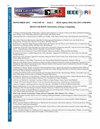G-CoV.2:用于对确诊为 COVID-19 的患者进行地理定位的计算系统
IF 1.3
4区 工程技术
Q3 COMPUTER SCIENCE, INFORMATION SYSTEMS
引用次数: 0
摘要
冠状病毒病 2019(COVID-19)是由严重急性呼吸系统综合征冠状病毒(SARS-CoV-2)引起的呼吸道传染病。在 COVID-19 目前的情况下,全球已有 600 多万人死亡,仅巴西就有近 70 万人死亡。这项工作的目的是使用 MySQL 设计一个数据库,开发一个用于对 COVID-19 感染者及其密切接触者进行地理定位的系统。实验室数据库中登记的患者地址可用于使用 OpenStreetMap 应用程序编程接口搜索坐标(纬度和经度)。用户界面采用 PHP 开发,使用 HTML、JavaScript、CSS 和 AJAX。屏幕上显示了选定病人的地理位置信息,供公共卫生人员使用。该系统名为 G-CoV.2。G-CoV.2 生成的制造商与相同的病人地址记录进行人工比较时,准确率达到 100%。G-CoV.2 可作为一个计算系统,帮助卫生管理人员确定受 COVID-19 或其他病理过程感染人数最多的地区。所提交的工作可以实现联合国为拉丁美洲制定的第三个可持续发展目标,即确保健康生活,从而促进所有年龄段所有人的福祉。方法之一是通过监测 COVID-19 和其他病理过程,将其作为一种预防措施,应用所开发的 G-CoV.2 系统,这也是本文写作的主题,该系统可以降低所有年龄段的死亡率,前提是结束严重传染病的流行,引导卫生管理人员增加对关键领域的卫生投资,以及开展有利于预防和促进人口健康的行动。本文章由计算机程序翻译,如有差异,请以英文原文为准。
G-CoV.2: A computational system for geolocation of patients diagnosed with COVID-19
Coronavirus disease 2019 (COVID-19) is a respiratory infection caused by the Severe Acute Respiratory Syndrome Coronavirus (SARS-CoV-2). In the current scenario of COVID-19, more than 6 million people have died worldwide, and near seven hundred thousand only in Brazil alone. The objective this work is designer a database using MySQL to develop a system for geolocating COVID-19 affected individuals and their close contacts. Patient addresses registered in the laboratory database were used to search for coordinate (latitude and longitude) using the OpenStreetMap Application Programming Interface. The user interface was developed in PHP using HTML, JavaScript, CSS, and AJAX. A dashboard displaying the geolocation information of selected patients was presented on the screen for public health agents. A system called G-CoV.2 was developed. The makers produced by G-CoV.2 had 100% accuracy when manually compared with the same patient address records. G-CoV.2 can be used as a computational system to aid health managers in identifying regions with the most people infected by COVID-19 or other pathological processes. The submitted work can meet the third goal of sustainable development of the United Nations for Latin America, ensuring a healthy life and thus promoting well-being for all people, at all ages. One of the ways is through the monitoring of COVID-19 and other pathologies as a preventive measure, applying the system developed G-CoV.2 that was the subject of the writing of the article, which may reduce the mortality rate at all ages, with the premise of ending epidemics of serious and communicable diseases, directing health managers to increase investment in health in critical areas, as well as creating actions in favor of prevention and promotion of the population's health.
求助全文
通过发布文献求助,成功后即可免费获取论文全文。
去求助
来源期刊

IEEE Latin America Transactions
COMPUTER SCIENCE, INFORMATION SYSTEMS-ENGINEERING, ELECTRICAL & ELECTRONIC
CiteScore
3.50
自引率
7.70%
发文量
192
审稿时长
3-8 weeks
期刊介绍:
IEEE Latin America Transactions (IEEE LATAM) is an interdisciplinary journal focused on the dissemination of original and quality research papers / review articles in Spanish and Portuguese of emerging topics in three main areas: Computing, Electric Energy and Electronics. Some of the sub-areas of the journal are, but not limited to: Automatic control, communications, instrumentation, artificial intelligence, power and industrial electronics, fault diagnosis and detection, transportation electrification, internet of things, electrical machines, circuits and systems, biomedicine and biomedical / haptic applications, secure communications, robotics, sensors and actuators, computer networks, smart grids, among others.
 求助内容:
求助内容: 应助结果提醒方式:
应助结果提醒方式:


